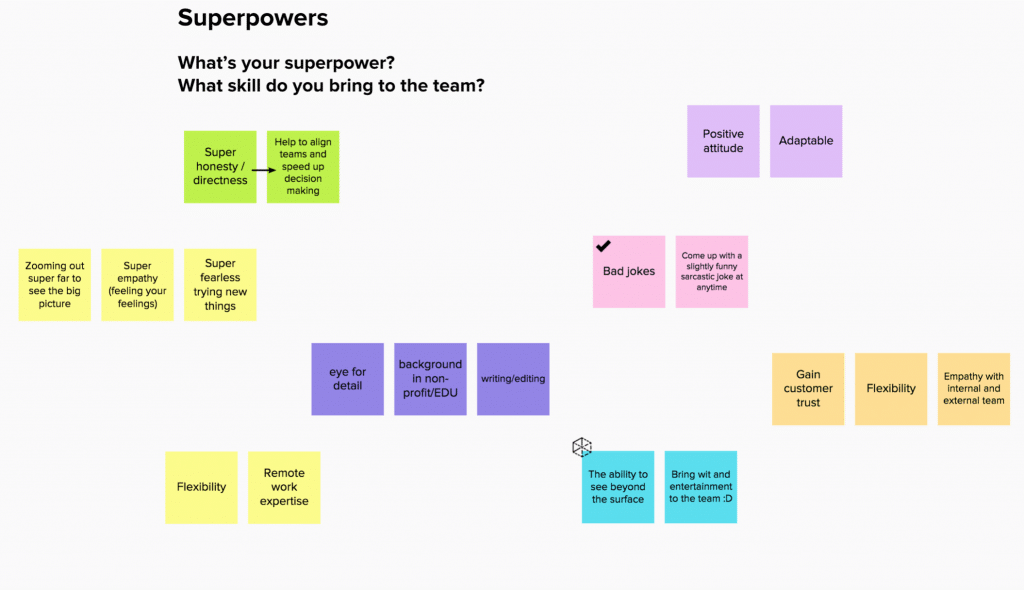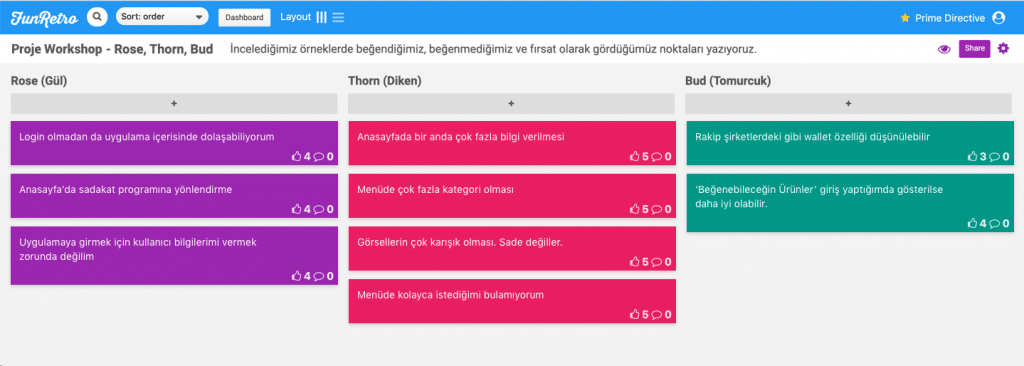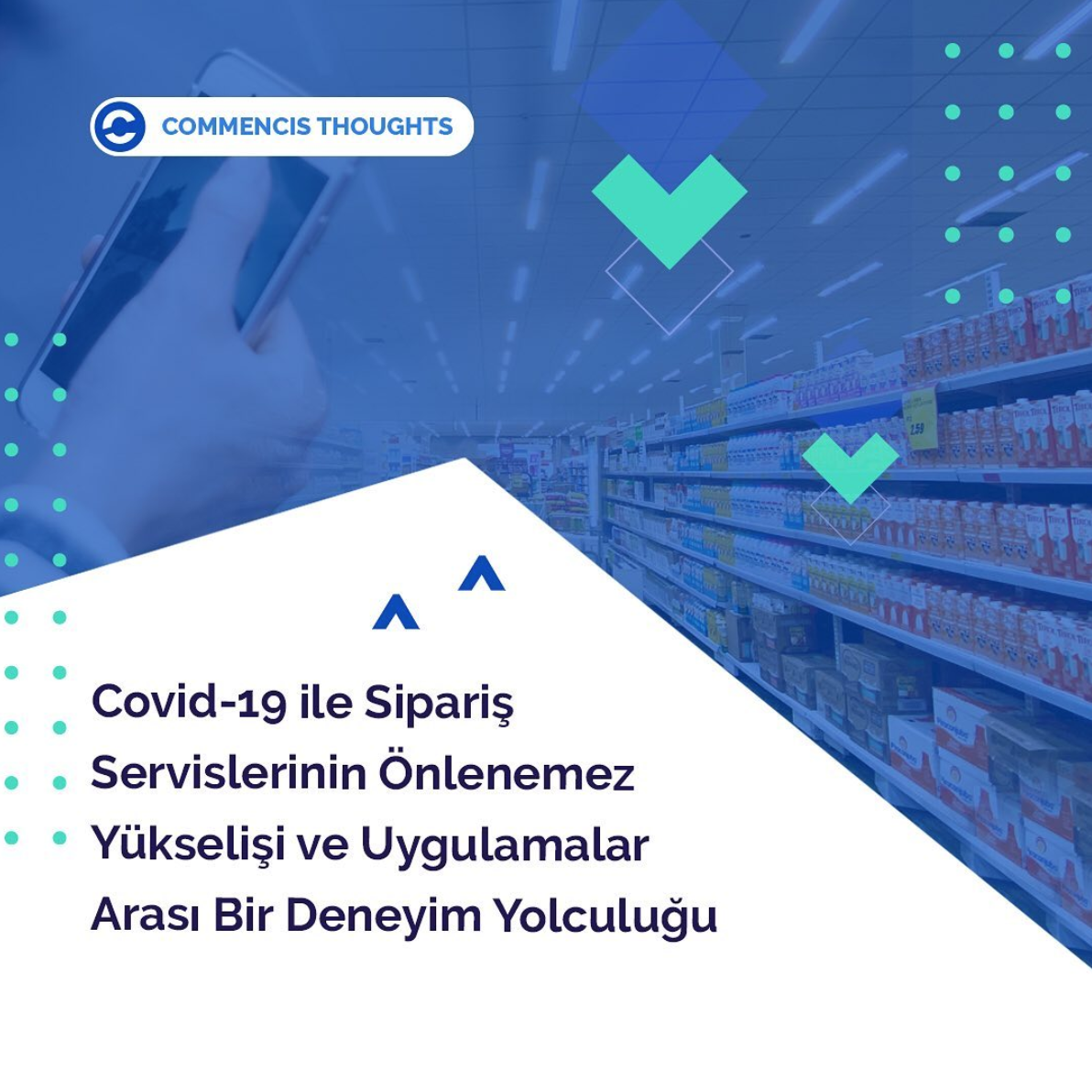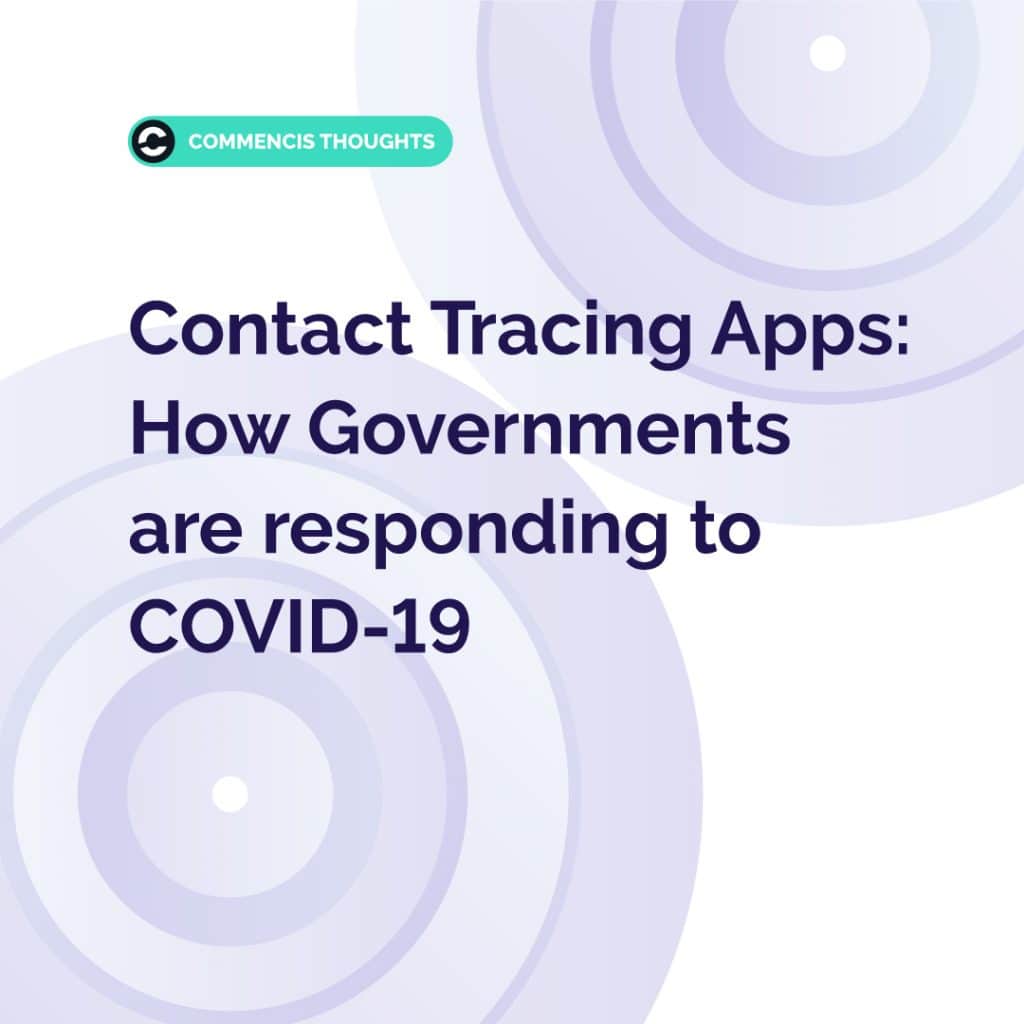How to get the best out of remote workshops and design activities
How to get the best out of remote workshops and design activities
Virtual collaboration has never been our primary choice to run UX workshops with our clients, regardless of the activity agenda or target. It was rather a complementary approach to fill in the gaps and to speed up the process when working across a wide geographic area. This used to be like that before COVID-19 times..
Current period full of new experiences, proved once again that there is nothing to replace human interaction, Yet, there are unexplored opportunities to accomplish more through remote collaboration when it comes to digital service/product design activities with external stakeholders.
We observed that although there is no magic guideline, such as using the right tools or structure to get the best out of virtual/remote workshops, there are key elements which are critical to shape a well functioning process and get satisfactory outcomes.
And we’ve actually run many workshops over the couple of months; with various goals such as emphatizing, problem framing, ideation and prototyping, which provided us great progress with new projects as well as ongoing initiatives. Especially new projects, where team members never had an opportunity of face-to-face communication before, continued smoothly not only because of the reasons described in this post, but also with the positive attitude and extra effort team members put in.
Keep reading to learn more on the good practices and the lessons learned during this period..
Replace your common tools & methods (if needed)
You can continue to use physical tools such as post-its, notepads, etc. and balance their use with digital tools, but we find it much more efficient to centralize digital tools for the sake of easy sharing and alignment.
Miro is our go-to online collaborative whiteboarding platform for various activities; including discovery workshops, where the facilitator is collecting participants’ ideas and filters out relevant ones and transforms ideas into notes and initial outputs on the spot. With its functionalities such as voting, commenting, journey mapping and workflow integrations; with MS Teams for communication, Jira for roadmap planning, Sketch for design & prototyping, the workshop experience and follow-up activities and deliverables become as seamless as possible.
So, question and re-design your collaboration process, empathizing with your clients. Make sure your platforms and tools are easy to use, secure and offer role management and they help the team to stay focused.
When re-designing your collaboration process, don’t forget to differentiate tasks which can be done in an asynchronous fashion in order to provide more flexibility and comfort to the participants.
Put more effort to setting the stage
Actually, prework of your workshop is not that much different than the face-to-face setup; you still create an agenda, work on your instructions step-by-step for running the workshop, have templates for the activities.
The biggest difference is that you don’t have control of the physical setup that you normally have.
And aligning participants before, during, and after the workshop is one of your key concerns in order to stick to your plan and have the desired output from the workshop.
Aligning participants means a lot of visibility and touch-base, for which you can share:
- the agenda
- timeframes for each item on the agenda
- background information of what is done so far
- key deliverables targeted as a result of the workshop
- an assignment to warm-up, gather initial thoughts
- a video to get a feeling about the activities planned
You also need to plan how to overcome common pitfalls easily & quickly; such as what to do when you lose your internet connection during the workshop, when you have troubles due to multi-tasking (taking notes, presenting, explaining etc) when you feel the audience is distracted, etc.
There is at least one solution for each and you should have a plan beforehand for each anticipated risk and problem.
Something we strongly recommend is to have a co-facilitator who can share your responsibility and help the team stay focused all the time.
Out of sight should not mean being disconnected
We should all know now that performing teams are not only consist of committed and brilliant team members, but they also communicate well, understand each other and have trust in each other.
Of course the workshop or design activities described here are not the single source of creating the desired ‘team vibe’ but you can support it easily with your tone of voice and using online warm-ups /energizers such as:
Facilitator: Prepare a canvas with sections where each participant can add their answers.
- Ask the following question: “What’s your superpower? What skill do you bring to the team?”
- Let everyone add images and sticky notes in their section.
- Once everyone is ready, take turns explaining. Encourage other participants to ask questions.

We are very pleased now that the virtual collaboration approach became an alternative rather than being a complementary method.
Since the approach became an alternative for face-to-face collaboration we need to understand the values it provides. Here are some benefits that we’ve learned in the past few weeks on running virtual workshops:
1.Time Efficiency
A good preparation is key to have an effective collaboration and to optimize the quality of the outcomes. It is important to set up the workshop space in advance, as it shows respect for your participants
We’ve created crystal clear agendas that clarify goals, explain activities and set a timeframe for the completion of each activity. We sent these agendas prior to the workshop to ensure that the virtual design activities start and progress quickly.
During the workshop, a lot of information is generated. The export and drag-and-drop functionality of the digital tools helped our team to modify and organize the information provided by the participants easily. By this way we were able to overcome the readability problem of sticky notes that we’ve frequently faced in physical workshops which caused a serious reduction in the time that we spent on digitizing the physical sticky notes.
2. Cost Efficiency
Before COVID-19, when we were able to travel without any restrictions we could travel long distances around the globe and attend to the workshops in-person. If we had to go to a different country, maybe we would spend 3-7 days there… Now, distances lost their meaning but we continue to carry out similar activities with our customers virtually and we realized that virtual design activities have significant cost-saving benefits in terms of transportation, accommodation and office supply expenses. On the other hand, we no longer actively use the office environment which significantly lowered our expenses on the energy as well as the expenses for cleaning services.
3.Increased Productivity
Virtual design collaboration can be done in so many different ways but the critical point is to produce quality outputs in the end. We designed workshops that include ‘quiet’ and ‘talking’ times to avoid groupthink. First, we allowed independent thinking and exploration, and then, we supported the process with video conferencing to create a discussion and share the ideas.
When we compared the results with the previously done face-to-face workshops, we found out that the quality of the output is almost the same or better. Minimized groupthink might be the main reason for the higher quality of the outputs. When participants are in the same space, they are usually affected by each other and their superiors. This situation limits the potential by causing participants to hesitate to express their feelings and thoughts.
Plus, the fact that the participants were sitting alone in an environment where they feel truly comfortable and looking at a computer screen might have enabled them to focus more on the activities given and to share their ideas openly.

4. Environmental Sustainability
The impact of humans being stuck at home is already noticeable on nature. Industrial manufacturing sector has been hit by the pandemic and restrictions keep people flying and driving. Latest reports reveal a sudden drop in greenhouse gas emission levels across major cities. According to the Mobility Trend Report by Apple, as of April 14, in Turkey 58 percent reduction in car use were recorded.
On the other hand, in normal conditions to ensure the comfort of the employees in offices continuous operation of heating or cooling in accordance with the season results in huge energy consumption. Today, most of the offices are empty and the employees work from home to avoid spreading the virus. Although, people who are staying at home consumes energy for heating, the ability to adjust the thermostat according to their own preference allows them to have more control on energy consumption.
Additionally, with the widespread use of digital tools we observed a decrease in the amount of waste that we produce . By using less physical materials such as post-its, papers, markers etc. for workshops we cut the amount of waste materials generated.
The struggle with COVID-19 continues to replace physical interactions with digital ones. During this period, we facilitated virtual design activities which significantly influenced our design processes by trying to replicate the conditions of a physical workshops. This period offered new opportunities to us by showing the benefits of remote working environment and the aspects that need to be improved.
In the following period, the virtual collaboration seems to play an important role by revealing new ways of doing business.
Reading Time: 10 minutes
Don’t miss out the latestCommencis Thoughts and News.

İpek Görgen / UX Designer
15/05/2020
Reading Time: 10 minutes
Virtual collaboration has never been our primary choice to run UX workshops with our clients, regardless of the activity agenda or target. It was rather a complementary approach to fill in the gaps and to speed up the process when working across a wide geographic area. This used to be like that before COVID-19 times..
Don’t miss out the latestCommencis Thoughts and News.
Current period full of new experiences, proved once again that there is nothing to replace human interaction, Yet, there are unexplored opportunities to accomplish more through remote collaboration when it comes to digital service/product design activities with external stakeholders.
We observed that although there is no magic guideline, such as using the right tools or structure to get the best out of virtual/remote workshops, there are key elements which are critical to shape a well functioning process and get satisfactory outcomes.
And we’ve actually run many workshops over the couple of months; with various goals such as emphatizing, problem framing, ideation and prototyping, which provided us great progress with new projects as well as ongoing initiatives. Especially new projects, where team members never had an opportunity of face-to-face communication before, continued smoothly not only because of the reasons described in this post, but also with the positive attitude and extra effort team members put in.
Keep reading to learn more on the good practices and the lessons learned during this period..
Replace your common tools & methods (if needed)
You can continue to use physical tools such as post-its, notepads, etc. and balance their use with digital tools, but we find it much more efficient to centralize digital tools for the sake of easy sharing and alignment.
Miro is our go-to online collaborative whiteboarding platform for various activities; including discovery workshops, where the facilitator is collecting participants’ ideas and filters out relevant ones and transforms ideas into notes and initial outputs on the spot. With its functionalities such as voting, commenting, journey mapping and workflow integrations; with MS Teams for communication, Jira for roadmap planning, Sketch for design & prototyping, the workshop experience and follow-up activities and deliverables become as seamless as possible.
So, question and re-design your collaboration process, empathizing with your clients. Make sure your platforms and tools are easy to use, secure and offer role management and they help the team to stay focused.
When re-designing your collaboration process, don’t forget to differentiate tasks which can be done in an asynchronous fashion in order to provide more flexibility and comfort to the participants.
Put more effort to setting the stage
Actually, prework of your workshop is not that much different than the face-to-face setup; you still create an agenda, work on your instructions step-by-step for running the workshop, have templates for the activities.
The biggest difference is that you don’t have control of the physical setup that you normally have.
And aligning participants before, during, and after the workshop is one of your key concerns in order to stick to your plan and have the desired output from the workshop.
Aligning participants means a lot of visibility and touch-base, for which you can share:
- the agenda
- timeframes for each item on the agenda
- background information of what is done so far
- key deliverables targeted as a result of the workshop
- an assignment to warm-up, gather initial thoughts
- a video to get a feeling about the activities planned
You also need to plan how to overcome common pitfalls easily & quickly; such as what to do when you lose your internet connection during the workshop, when you have troubles due to multi-tasking (taking notes, presenting, explaining etc) when you feel the audience is distracted, etc.
There is at least one solution for each and you should have a plan beforehand for each anticipated risk and problem.
Something we strongly recommend is to have a co-facilitator who can share your responsibility and help the team stay focused all the time.
Out of sight should not mean being disconnected
We should all know now that performing teams are not only consist of committed and brilliant team members, but they also communicate well, understand each other and have trust in each other.
Of course the workshop or design activities described here are not the single source of creating the desired ‘team vibe’ but you can support it easily with your tone of voice and using online warm-ups /energizers such as:
Facilitator: Prepare a canvas with sections where each participant can add their answers.
- Ask the following question: “What’s your superpower? What skill do you bring to the team?”
- Let everyone add images and sticky notes in their section.
- Once everyone is ready, take turns explaining. Encourage other participants to ask questions.

We are very pleased now that the virtual collaboration approach became an alternative rather than being a complementary method.
Since the approach became an alternative for face-to-face collaboration we need to understand the values it provides. Here are some benefits that we’ve learned in the past few weeks on running virtual workshops:
1.Time Efficiency
A good preparation is key to have an effective collaboration and to optimize the quality of the outcomes. It is important to set up the workshop space in advance, as it shows respect for your participants
We’ve created crystal clear agendas that clarify goals, explain activities and set a timeframe for the completion of each activity. We sent these agendas prior to the workshop to ensure that the virtual design activities start and progress quickly.
During the workshop, a lot of information is generated. The export and drag-and-drop functionality of the digital tools helped our team to modify and organize the information provided by the participants easily. By this way we were able to overcome the readability problem of sticky notes that we’ve frequently faced in physical workshops which caused a serious reduction in the time that we spent on digitizing the physical sticky notes.
2. Cost Efficiency
Before COVID-19, when we were able to travel without any restrictions we could travel long distances around the globe and attend to the workshops in-person. If we had to go to a different country, maybe we would spend 3-7 days there… Now, distances lost their meaning but we continue to carry out similar activities with our customers virtually and we realized that virtual design activities have significant cost-saving benefits in terms of transportation, accommodation and office supply expenses. On the other hand, we no longer actively use the office environment which significantly lowered our expenses on the energy as well as the expenses for cleaning services.
3.Increased Productivity
Virtual design collaboration can be done in so many different ways but the critical point is to produce quality outputs in the end. We designed workshops that include ‘quiet’ and ‘talking’ times to avoid groupthink. First, we allowed independent thinking and exploration, and then, we supported the process with video conferencing to create a discussion and share the ideas.
When we compared the results with the previously done face-to-face workshops, we found out that the quality of the output is almost the same or better. Minimized groupthink might be the main reason for the higher quality of the outputs. When participants are in the same space, they are usually affected by each other and their superiors. This situation limits the potential by causing participants to hesitate to express their feelings and thoughts.
Plus, the fact that the participants were sitting alone in an environment where they feel truly comfortable and looking at a computer screen might have enabled them to focus more on the activities given and to share their ideas openly.

4. Environmental Sustainability
The impact of humans being stuck at home is already noticeable on nature. Industrial manufacturing sector has been hit by the pandemic and restrictions keep people flying and driving. Latest reports reveal a sudden drop in greenhouse gas emission levels across major cities. According to the Mobility Trend Report by Apple, as of April 14, in Turkey 58 percent reduction in car use were recorded.
On the other hand, in normal conditions to ensure the comfort of the employees in offices continuous operation of heating or cooling in accordance with the season results in huge energy consumption. Today, most of the offices are empty and the employees work from home to avoid spreading the virus. Although, people who are staying at home consumes energy for heating, the ability to adjust the thermostat according to their own preference allows them to have more control on energy consumption.
Additionally, with the widespread use of digital tools we observed a decrease in the amount of waste that we produce . By using less physical materials such as post-its, papers, markers etc. for workshops we cut the amount of waste materials generated.
The struggle with COVID-19 continues to replace physical interactions with digital ones. During this period, we facilitated virtual design activities which significantly influenced our design processes by trying to replicate the conditions of a physical workshops. This period offered new opportunities to us by showing the benefits of remote working environment and the aspects that need to be improved.
In the following period, the virtual collaboration seems to play an important role by revealing new ways of doing business.






